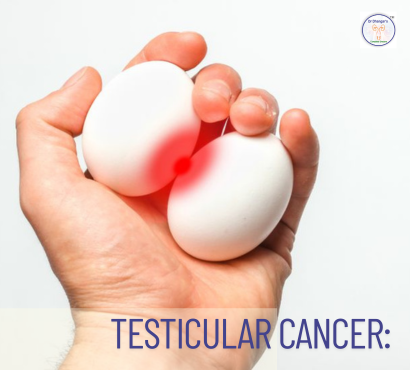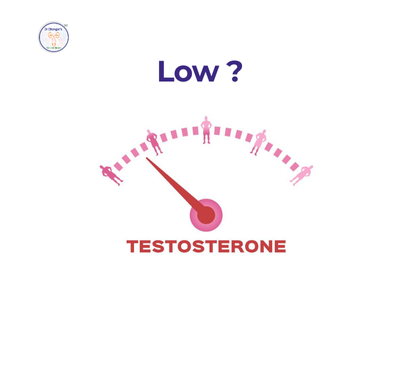Cancer is one of the most feared diseases in today’s world, and while awareness around common cancers such as breast, lung, and colon cancer has increased, testicular cancer often goes unnoticed. Despite being relatively rare, testicular cancer is one of the most common cancers among young men, particularly between the ages of 15 and 40. The good news is that testicular cancer is highly treatable, especially when detected early.
In this blog, we’ll break down the risk factors, prevention methods, and treatment options related to testicular cancer, while also addressing common questions patients may have.
Understanding Testicular Cancer
Testicular cancer develops in the testicles (testes), which are part of the male reproductive system and responsible for producing sperm and testosterone. Most cases start in the germ cells — the cells that produce sperm.
There are two main types of germ cell tumors (GCTs):
- Seminomas – usually grow slowly and are more sensitive to radiation.
- Non-seminomas – grow faster and may spread quickly.
Recognizing the difference is important, as it influences treatment decisions.
Risk Factors for Testicular Cancer
While the exact cause of testicular cancer remains unclear, researchers have identified several risk factors that increase the likelihood of developing the disease:
1. Age
- Most common in men between 15–40 years.
- Rare in children or older men, though not impossible.
2. Family History
- Men with a close relative (father or brother) who had testicular cancer are at higher risk.
3. Undescended Testicle (Cryptorchidism)
- Boys born with an undescended testicle (where one or both testicles fail to move down into the scrotum) have a greater risk, even if corrective surgery was performed.
4. Personal History
- Having cancer in one testicle increases the risk of developing it in the other.
5. Race and Ethnicity
- More common in Caucasian men compared to Asian or African men.
6. Infertility
- Some studies suggest men with fertility issues may have a higher risk.
7. HIV Infection
- Men with HIV, particularly AIDS, appear to have a slightly higher chance of testicular cancer.
Signs and Symptoms
Early detection can make a huge difference. Watch out for the following:
- A painless lump or swelling in the testicle (most common sign)
- Heaviness or discomfort in the scrotum
- Dull ache in the lower abdomen or groin
- Sudden collection of fluid in the scrotum
- Pain or discomfort in the testicle or scrotum
- Enlargement or tenderness of the breasts (due to hormonal changes)
⚠️ Remember: Not every lump is cancerous, but any unusual change should be checked by a doctor immediately.
Prevention Tips
While there is no guaranteed way to prevent testicular cancer, certain lifestyle choices and proactive measures can lower risks:
1. Regular Self-Examination
- Monthly testicular self-exams can help detect lumps early.
- Best time: after a warm shower when the scrotal skin is relaxed.
2. Healthy Lifestyle Choices
- Balanced diet, regular exercise, and avoiding smoking/alcohol may support overall reproductive health.
3. Awareness of Family History
- Men with a family history should be extra vigilant with regular screenings.
4. Prompt Treatment of Undescended Testicles
- Surgical correction (orchiopexy) in early childhood reduces risk.
Diagnosis
If testicular cancer is suspected, doctors may recommend:
- Ultrasound – first step to detect abnormalities.
- Blood tests (tumor markers) – measure substances like AFP, HCG, and LDH.
- Biopsy/Orchiectomy – suspicious testicle may be surgically removed for analysis.
- CT scans/MRI – to check if cancer has spread.
Treatment Options
Treatment depends on the type and stage of cancer:
1. Surgery (Orchiectomy)
- Removal of the affected testicle.
- Standard treatment for almost all cases.
2. Radiation Therapy
- Mostly used for seminomas.
- Targets remaining cancer cells after surgery.
3. Chemotherapy
- Effective for both seminomas and non-seminomas.
- Used when cancer spreads beyond the testicle.
4. High-Dose Chemotherapy with Stem Cell Transplant
- For advanced or recurrent cases.
5. Surveillance (Active Monitoring)
- For very early stages, regular follow-ups may be recommended instead of immediate aggressive treatment.
Coping and Support
Receiving a cancer diagnosis can be emotionally overwhelming. Support systems such as family, counseling, and patient groups can make the journey easier. Fertility concerns are common, as treatments may affect sperm production. Doctors often suggest sperm banking before starting therapy.
Prognosis
The outlook for testicular cancer is extremely positive, with a survival rate of over 95% in early-stage cases. Even advanced cases have good outcomes with proper treatment.
FAQs
1. Can testicular cancer spread to other parts of the body?
Yes. It can spread to lymph nodes, lungs, liver, or even the brain if left untreated. However, treatments are highly effective in stopping or controlling the spread.
2. Does removing one testicle affect sexual life or fertility?
In most cases, no. The remaining testicle can produce enough testosterone and sperm. However, some men may experience fertility challenges, which is why sperm banking is recommended before treatment.
3. How often should men perform self-exams?
A self-exam once a month is sufficient. Men should check for lumps, changes in size, or unusual hardness. Early detection is the key to successful treatment.




